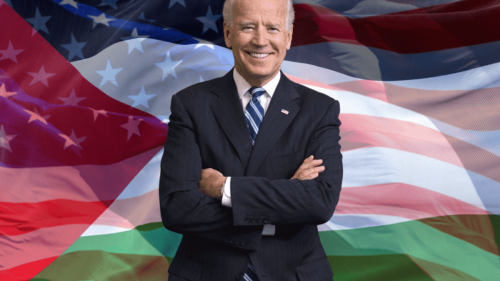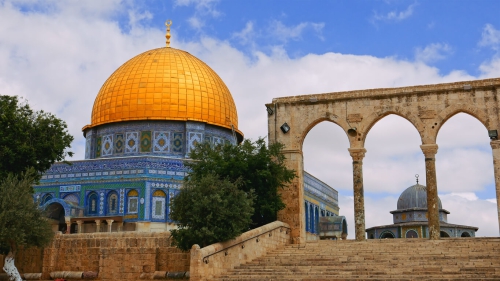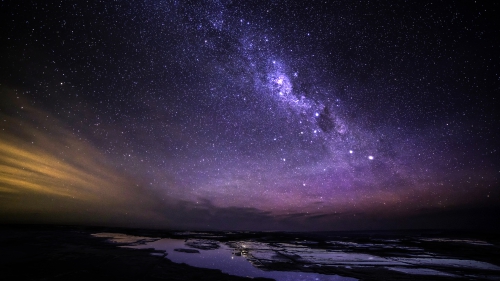First Arab Mars Mission Reaches Orbit

The United Arab Emirates’ Hope spacecraft has entered Martian orbit, completing the riskiest part of its two-year mission. The feat makes the United Arab Emirates (UAE) the fifth player to successfully reach Mars, following European, Indian, Russian and US space agencies.
Hope is part of the first interplanetary mission by any Arab state. The US$200-million probe — called Amal in Arabic — was built at the University of Colorado Boulder and at the Mohammed bin Rashid Space Centre (MBRSC) in Dubai, by a team of engineers from both institutions and other US partners. Its entry into Martian orbit paves the way for the probe’s science mission, during which it will make observations of the planet’s atmosphere, across all times and locations.
In the UAE, public monuments and heritage sites were lit up in red during the countdown to the craft’s arrival. News of the probe’s successful arrival was greeted by applause in the MBRSC control room.
“The past seven years of our lives have revolved around preparing for this moment. And the moment was surreal,” says Fatma Lootah, a member of the mission’s science team at the MBRSC. “We are very excited for what is yet to come.”
“The hairs on the back of my neck are standing up, I’ve got goose bumps. What an amazing achievement,” said Fahad Al Meheiri, a senior official at the UAE Space Agency, speaking on the Dubai One television channel as the announcement came in.
Entry into Mars’s orbit happened at around 16.00 UTC on 9 February, after a seven-month journey following Hope’s launch from Japan on 20 July. With a 27-minute-long burn of its 6 thrusters, the craft will have slowed from its cruise speed of 121,000 kilometres per hour to around 18,000 kilometres per hour, using up about half of its total fuel supply. To enter orbit after its 494-million-kilometre journey, Hope needed to hit a 600-kilometre sweet spot.
It was the “riskiest point” in the project, says Omran Sharaf, project director of the Emirates Mars Mission at the MBRSC.
The manoeuvre seems to have been “right-down-the-middle”, says Brett Landin, an engineer at the University of Colorado Boulder, who leads the mission’s spacecraft team. “We anxiously await confirmation from our navigation team in the coming hours that we have achieved our desired orbit, giving us unprecedented perspective on both the immediate and long-term weather and climate patterns of our Martian neighbour.”
Engineers were unable to operate Hope remotely from mission control in real time, because signals to the red planet take 11 minutes to travel each way. Instead, the craft acted autonomously, using commands uploaded four days ahead of time. Hope was designed to have “some level of smarts” to cope with surprises during the manoeuvre, says Pete Withnell, programme manager for the mission at the University of Colorado.
Weather map
The craft is now in an elliptical holding orbit while engineers test and commission its instruments, ready to move into the ‘science orbit’ from which Hope will begin its mission in earnest in mid-May. This wide, elliptical orbit is what makes the mission special. It will allow Hope’s three instruments — a high-resolution imager and infrared and ultraviolet spectrometers — to observe every geographical region of Mars, at every time of day, once every nine days, to create a global map of Martian weather. Such observations have never before been made at Mars.
After processing, the data will be available to the global scientific community without an embargo. The first tranche of data should be released by September, said Sarah Al Amiri, the mission’s deputy project manager and science lead, at a briefing ahead of the event. The data will allow researchers to analyse the planet’s atmosphere, from dust storms in its lower reaches to its outermost layer, the exosphere from which hydrogen and oxygen escape into space. The data will also help scientists to piece together how activities in the various atmospheric regions influence each other.
Scientists are already analysing data from unplanned, “opportunistic” experiments during Hope’s journey, says Al Amiri. In one, Hope looked across the Solar System at the European Space Agency’s BepiColombo spacecraft, which is travelling to Mercury. By observing each other across the same stretch of space, the two craft should have seen the same levels of hydrogen, allowing teams to cross-calibrate their instruments and examine the distribution of hydrogen in the Solar System.
Rapid rise
The UAE’s rise as a space power has been swift. The country’s first space venture was just 15 years ago, when it began work with the Satrec Initiative, a company based in Daejeon, South Korea, to build an Earth-observation satellite. Last year, it announced plans to send a rover to the Moon in 2024. Unlike the Emirates Mars Mission, which involved hundreds of Emirati engineers but saw Hope designed and built mostly in the United States, the rover is intended to be developed solely in the UAE.
Hope launched from the Tanegashima Space Center near Minamitane, Japan. It was one of three probes destined for Mars to launch last July; China’s Tianwen-1 is expected to arrive at the red planet on 10 February, and NASA’s Perseverance rover will land on 18 February.
So far, the mission has been an “emotional rollercoaster”, said Al Amiri at the briefing. “Every point of celebration is followed by several points of worry, waiting for the next point of celebration,” she said.
“This mission has been a bold undertaking by a young nation, and I could not be more thrilled to be a part of this historic endeavour,” says Landin.
( Source: Nature, re-published under Open Access model, Creative Commons CC-BY license )
Topics: Arab World, Space And Astronomy, United Arab Emirates Values: Hope, Knowledge
Views: 1057
Related Suggestions


















